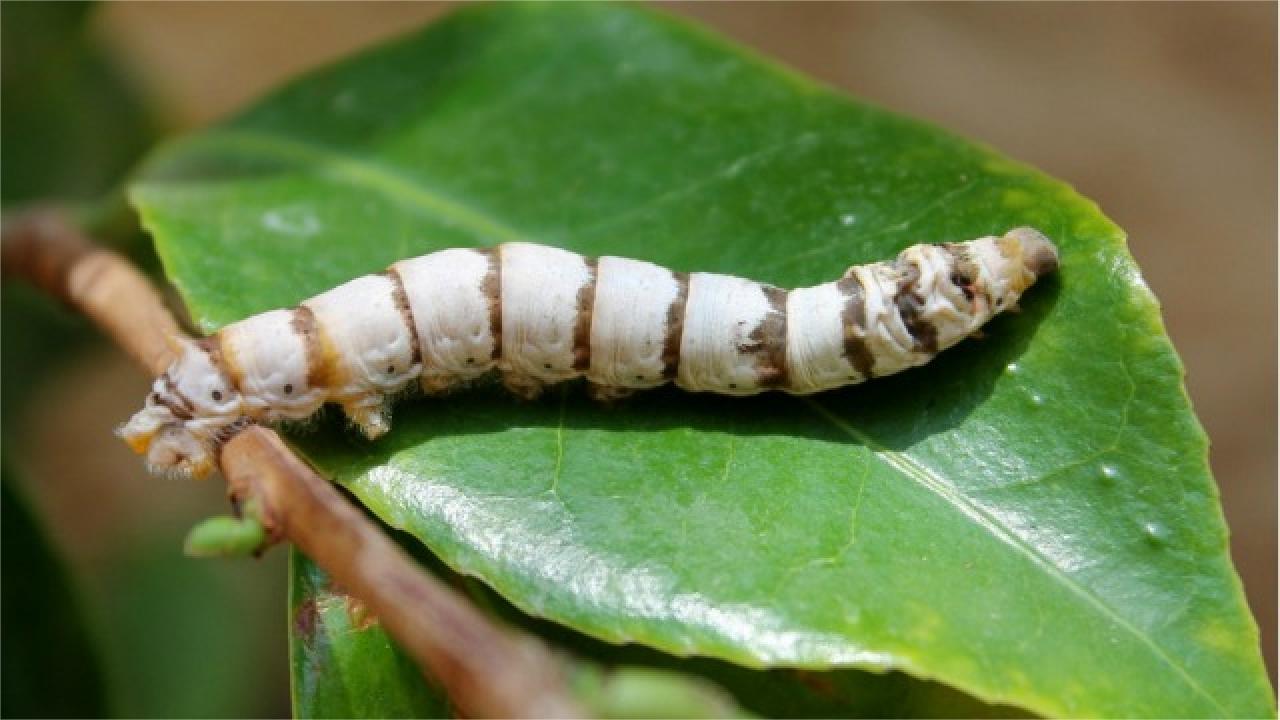
Silkworms are fascinating creatures that have played a significant role in human history. Ever wondered how these tiny insects produce luxurious silk? Silkworms are the larvae of the domesticated silk moth, Bombyx mori. They have been cultivated for thousands of years, primarily in China, where the secret of silk production was closely guarded. These little critters munch on mulberry leaves and spin cocoons made of a single, continuous thread of raw silk. Did you know that one cocoon can contain up to 1,000 meters of silk thread? Silkworms have not only contributed to the textile industry but also to scientific research, including genetics and medicine. Ready to learn more? Here are 35 intriguing facts about silkworms that will leave you amazed!
The Fascinating World of Silkworms
Silkworms, the tiny creatures behind luxurious silk, have a captivating story. These insects have been integral to human history for thousands of years. Let's dive into some intriguing facts about them.
Silkworm Biology
Understanding the biology of silkworms reveals why they are so special.
- Silkworms are the larvae of the silk moth, scientifically known as Bombyx mori.
- They undergo a complete metamorphosis, transforming from egg to larva, pupa, and finally, adult moth.
- Silkworms have a voracious appetite, primarily feeding on mulberry leaves.
- A silkworm's body is divided into three parts: head, thorax, and abdomen.
- They breathe through small openings called spiracles located along their sides.
Silk Production
Silkworms are famous for their ability to produce silk, a process that is both fascinating and complex.
- Silkworms spin silk from two glands located in their heads.
- Each silkworm cocoon can contain up to 1,000 yards of silk thread.
- The silk thread is made of a protein called fibroin, which is secreted in liquid form and hardens upon exposure to air.
- It takes about 2,500 silkworms to produce one pound of raw silk.
- The process of harvesting silk often involves boiling the cocoons to extract the silk threads.
Historical Significance
Silkworms have played a crucial role in human history, particularly in the development of trade and culture.
- Silk production dates back to ancient China around 2700 BCE.
- The Silk Road, a network of trade routes, was named after the lucrative silk trade.
- For centuries, the Chinese guarded the secrets of silk production, making it a highly prized commodity.
- Legend has it that Empress Leizu discovered silk when a cocoon fell into her tea, unraveling into a fine thread.
- Silk was once used as currency in ancient China.
Silkworms in Modern Times
Even today, silkworms continue to be important in various industries and scientific research.
- Silk is used in medical sutures due to its biocompatibility and strength.
- Researchers are exploring the use of silk in biodegradable electronics.
- Silkworms are also used in genetic research to study gene expression and protein production.
- In some cultures, silkworm pupae are considered a delicacy and are eaten as a source of protein.
- The silk industry provides livelihoods for millions of people worldwide.
Fun and Unusual Facts
Here are some lesser-known and quirky facts about silkworms that might surprise you.
- Silkworms have been domesticated for so long that they can no longer survive in the wild.
- They are colorblind and rely on their sense of smell to find food.
- Silkworms can produce different colors of silk depending on their diet.
- The silk produced by silkworms is stronger than steel when compared by weight.
- Silkworms communicate with each other through vibrations.
Environmental Impact
Silkworm farming, or sericulture, has both positive and negative environmental impacts.
- Mulberry trees, the primary food source for silkworms, help in soil conservation and prevent erosion.
- Sericulture can be a sustainable agricultural practice when managed properly.
- However, the process of boiling cocoons to extract silk raises ethical concerns regarding animal welfare.
- Organic silk production methods are being developed to reduce environmental impact.
- Silkworm farming can contribute to biodiversity by promoting the growth of mulberry trees.
Cultural Impact
Silkworms have influenced art, fashion, and culture in various ways.
- Silk has been used in traditional clothing, such as kimonos in Japan and saris in India.
- The intricate patterns of silk fabrics have inspired countless artists and designers.
- Silkworms are featured in Chinese folklore and mythology.
- Silk painting is a traditional art form in many Asian cultures.
- The luxurious feel of silk has made it a symbol of wealth and status throughout history.
Silkworms: Nature's Tiny Marvels
Silkworms are more than just insects; they're tiny marvels of nature. From their role in the production of luxurious silk to their fascinating life cycle, these little creatures have a big impact. They start as eggs, transform into caterpillars, and eventually spin cocoons that produce silk threads. This silk has been prized for thousands of years, especially in ancient China, where it was a closely guarded secret.
Beyond silk, silkworms also contribute to scientific research and even medicine. Their unique biology helps scientists understand genetics and disease. Plus, their cocoons are used in some medical sutures and skin treatments.
So next time you see a piece of silk, remember the incredible journey of the silkworm. These small creatures play a big role in our world, blending nature, science, and history into one fascinating story.
Was this page helpful?
Our commitment to delivering trustworthy and engaging content is at the heart of what we do. Each fact on our site is contributed by real users like you, bringing a wealth of diverse insights and information. To ensure the highest standards of accuracy and reliability, our dedicated editors meticulously review each submission. This process guarantees that the facts we share are not only fascinating but also credible. Trust in our commitment to quality and authenticity as you explore and learn with us.
